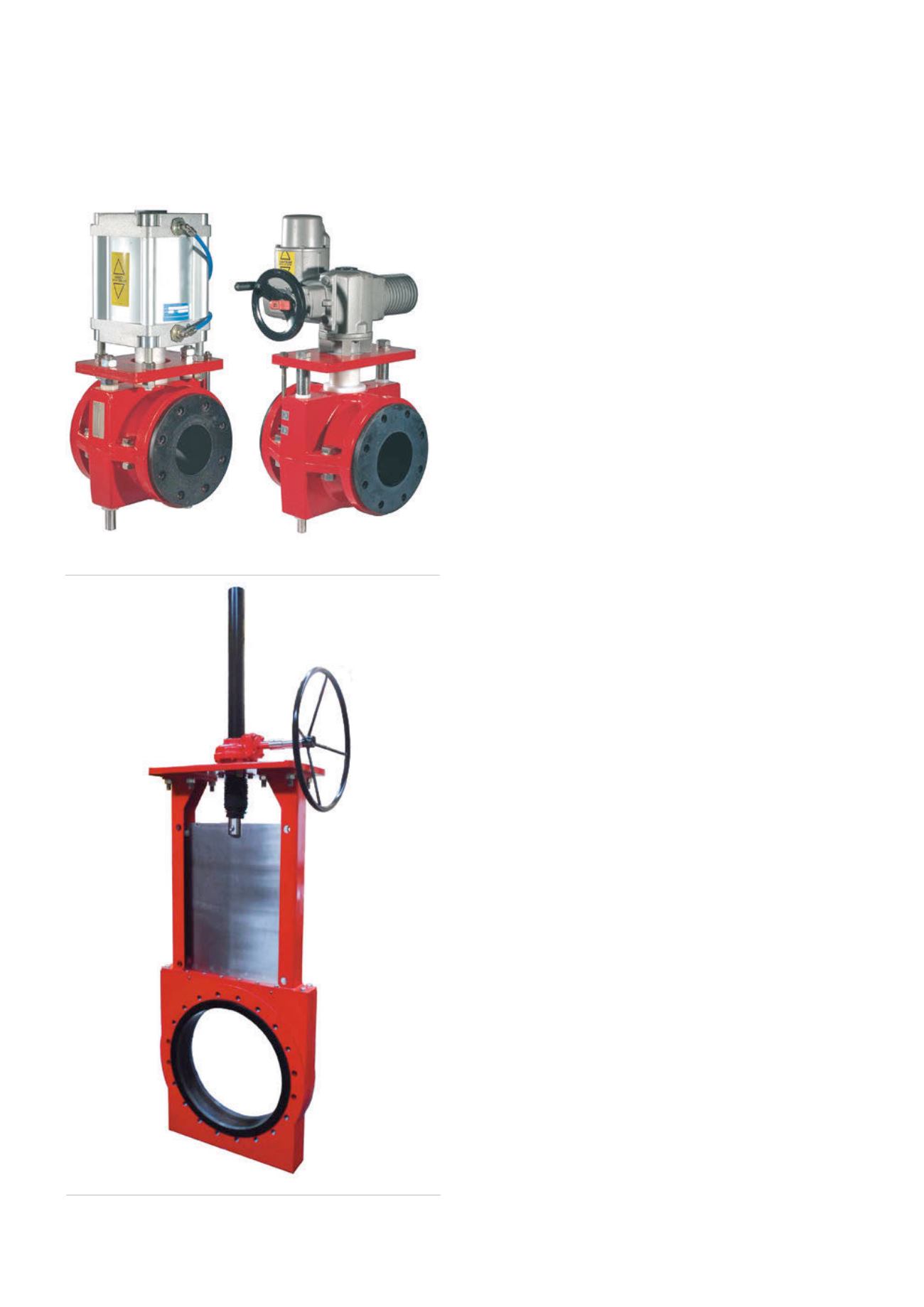
Being able to survive both the presence of oil, sand and
seawater, pinch valves have been used. Sand is abrasive and
destructive to normal valves. To survive such conditions, the
pinch valve utilises a nitrile rubber sleeve. The rubber sleeve
is the only component in contact with the medium and thus
protects the body from abrasion and corrosion.
Minimal disruption
Industries that process difficult slurries have learned that
push through knife gates provide reliable isolation of difficult
to control slurries. The push through knife gate utilises two
rubber sleeves that seal against a stainless steel gate. As the
gate closes, it separates two spring loaded rubber sleeves
to close the valve. The spring is vulcanised into the heart of
the rubber sleeves. When the valve is reopened, the rubber
sleeves spring back together to form a tight seal against one
another. When the gate is in the open position, the rubber
sleeves are the only components in contact with the medium
and survive extremely well in abrasive or contaminated
mediums.
One great feature of this type of valve is that if solid
material collects in the bottom of the valve, then the gate
pushes the hardened material between the seats and is
discharged into a chamber at the bottom of the valve. This
helps to insure that the valve remains trouble free. The
bottom flushing plate can be automated with clean water
flushing or periodically removed to clear the chamber of
debris. For pipeline valves that are operated infrequently, the
interval between cleaning can be quite long. The new Flowrox
SKW valve has a unique feature that is not found in other
types of push through knife gates; it utilises load distribution
rings that are internally incorporated to the rubber sleeves.
Load distribution rings are metal rings that distribute
the flange load over the face of the valve body. As a
result, excessive force cannot be applied to the rubber
sleeves. Rubber sleeves that are over compressed from any
manufacturer of rubber lined knife gate valves will cause the
valve to malfunction or will damage the sleeves. Sometimes,
existing tolerances are tight and valves are shoe horned into
place. If this occurs with valves without ring sleeves, then
the valve usually has problems. Ring sleeves are not typically
provided on new valves and the customer has to experience
a failing valve or malfunctioning valve first. Typically, the
customer purchases load distribution rings that are retrofitted
to the exterior flange to help protect the rubber sleeves.
With Flowrox’s SKW valve, the ring sleeves are incorporated
into every valve sleeve and will help to eliminate any future
problems from extreme flange loading. This valve also
incorporates a robust tower that allows for the mounting of
pneumatic, electric or hydraulic actuation methods. Standard
with the valve are lock out pins so the valve can be locked in
the open or closed position.
Pipeline monitoring
Pipeline monitoring is performed by advanced
instrumentation. There are many instruments to monitor
multiple parameters. The oil and gas industry typically
monitors pressure drop or loss of flow to determine if a
pipeline is becoming fouled or clogged. The oil industry
spends as much as 0.25% of global GDP on monitoring,
cleaning and dealing with paraffin wax build-up or deposits.
Figure 2.
Flowrox SKW rubber lined knife gate.
Figure 1.
Pneumatic and electric operated pinch valves.
96
World Pipelines
/
JUNE 2015


